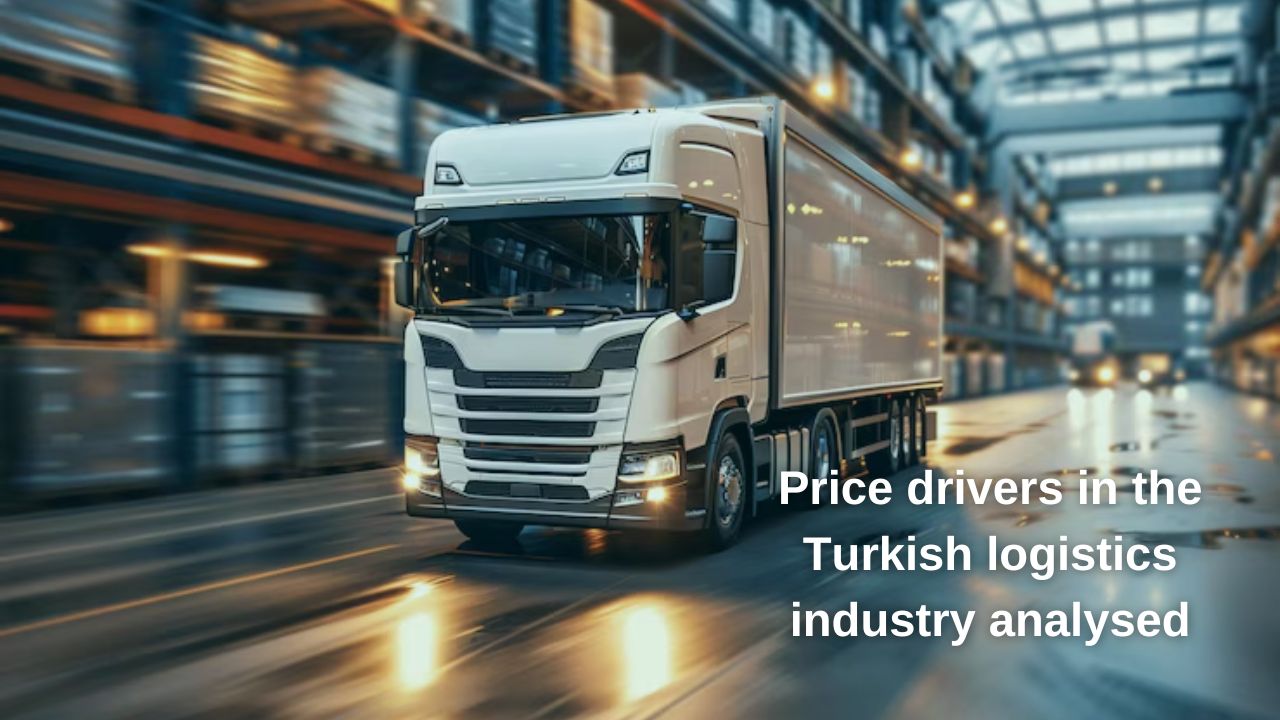News
Price Drivers in the Turkish Logistics Industry Analyzed
Content
-
Overview of the Cost Structure in Logistics
-
The Impact of Fuel Prices
-
Labor Costs and Employment Challenges
-
Infrastructure Issues and Traffic Continuity
-
Impact of Supply Chain Disruptions
-
Customs and Tax Practices
-
The Role of Exchange Rate Fluctuations
-
Difficulties in Procuring Equipment and Vehicles
-
The Burden of Technology Investments and Digitalization
-
Sustainability Pressure and Costs of Green Logistics
-
Regional Competition and Local Transport Differences
-
Proposals and Strategies for Long-Term Solutions
Overview of the Cost Structure in Logistics
In the Turkish logistics sector, costs are influenced by the interplay of many factors. Each transportation, storage, packaging, and distribution process incurs separate costs. The interaction of these elements leads to an increase or decrease in total costs. Companies must conduct detailed analyses and make strategic decisions to manage this complex structure. In a rapidly changing market environment, cost control becomes a fundamental competitive advantage.
One of the main factors for rising costs is the lack of operational efficiency. Deficiencies in areas such as infrastructure, technological equipment, and personnel lead to longer processes and higher costs. Cost management in logistics, therefore, involves not only price reductions but also process optimization.
The Impact of Fuel Prices
Fuel consumption in logistics is one of the largest cost factors in the industry. Since road transport is widespread in Turkey, changes in fuel prices directly affect transportation costs. Fluctuations in global crude oil prices and local taxes lead to rising or falling prices. These changes can result in a rapid and significant increase in transportation fees.
Rising fuel prices not only directly impact transportation costs but also increase vehicle maintenance costs, as high fuel consumption accelerates engine wear. Energy and heating systems in warehouses also suffer from rising fuel costs. Thus, fuel prices trigger a domino effect in the logistics industry.
Labor Costs and Employment Challenges
The demand for personnel in logistics is increasing daily. The industry struggles to find experienced drivers and logistics experts. The labor shortage forces companies to improve salaries and benefits, which increases overall labor costs and leads to rising prices.
Factors such as employee training needs, social security obligations, and working hours further increase costs. Investments in employee satisfaction enhance long-term productivity but entail short-term additional costs for companies. Labor market issues are considered a significant risk for the future viability of the logistics industry.

Infrastructure Issues and Traffic Continuity
Turkey’s logistics infrastructure, especially on highways, faces various problems. Traffic density, road quality, and infrastructure deficiencies extend transportation times. Delays affect customer satisfaction and increase operating costs. Insufficient infrastructure investments, particularly on critical routes, make planning difficult for logistics companies.
Container congestion and limited storage space at ports further slow logistics processes. Such infrastructure issues lead to transportation delays and additional storage costs. Expanding infrastructure is one of the most important prerequisites for reducing logistics costs.
Impact of Supply Chain Disruptions
Disruptions in global and local supply chains directly contribute to rising logistics costs. The inability to deliver raw materials and products on time causes delays in production and distribution processes. This situation forces logistics companies to resort to faster and more expensive alternative transportation methods.
Supply chain disruptions complicate inventory management. Increased inventory levels raise storage costs and extend product waiting times. Long storage periods can lead to quality issues and reduce customer satisfaction. Therefore, supply chain continuity is critical for controlling logistics costs.
Customs and Tax Practices
Bureaucratic processes in imports and exports further increase logistics costs. Slow customs procedures lead to longer transportation times. These delays result in extended waiting times for transport vehicles, increasing additional labor and fuel costs.
Changes in tax rates and additional financial burdens directly affect the pricing strategies of logistics companies. Frequent changes in customs and tax legislation make it difficult for companies to operate transparently. This leads to price fluctuations in the industry and reduced predictability.
The Role of Exchange Rate Fluctuations
Most equipment, vehicles, and spare parts used in the logistics sector are imported. Therefore, exchange rate fluctuations significantly impact costs. Rising exchange rates increase the prices of spare parts and labor, thereby raising maintenance and renewal costs.
At the same time, exchange rate fluctuations in currency-based contracts in international logistics make it difficult to ensure price stability. Companies are forced to use financial instruments to manage currency risks. Exchange rate uncertainties are among the most significant factors increasing overall logistics costs.
Difficulties in Procuring Equipment and Vehicles
Supply issues with transportation vehicles and logistics equipment lead to rising costs in the industry. In particular, the high costs of vehicles compatible with new technologies force companies to continue using old and inefficient vehicles, increasing fuel consumption and maintenance costs.
Delays in equipment supply cause operational disruptions. Insufficient warehouse transport vehicles and other auxiliary equipment slow down work processes and require additional personnel. This increases direct costs and negatively affects customer satisfaction.
The Burden of Technology Investments and Digitalization
To increase efficiency in logistics, technology investments are essential. However, these investments come with high acquisition costs. Software systems, automation technology, and personnel training strain companies’ financial resources. For small and medium-sized logistics companies, this can pose a significant obstacle.
The long-term benefits of digitalization can offset short-term cost increases. However, since investments take time to amortize, companies must carefully manage their cash flow. Companies that fail to invest in technology may lose their competitive advantage and face cost pressures.
Sustainability Pressure and Costs of Green Logistics
Growing environmental awareness necessitates the adoption of eco-friendly practices in the logistics industry. Applications such as electric vehicles, low-emission transportation, and energy-efficient storage systems can increase costs. While these investments raise costs in the short term, they lead to energy savings and reputational gains in the long term.
Compliance with sustainability criteria has become a competitive factor for many companies. Adhering to environmental regulations can lead to higher operating costs but also fosters innovation and efficiency in the industry.
Regional Competition and Local Transport Differences
Logistics costs vary across different regions in Turkey. While traffic congestion and infrastructure issues increase costs in urban areas, access difficulties in rural areas have similar effects. Regional differences complicate cost management for companies.
In regions with intense competition, price pressure increases. Local transport conditions and customer expectations are significant factors influencing logistics prices. Companies aim to optimize their costs by developing regional strategies.
Proposals and Strategies for Long-Term Solutions
Controlling logistics costs requires diverse strategies. Infrastructure investments, technology integration, and training programs form the foundation of these strategies. Additionally, adopting sustainable and eco-friendly logistics practices offers opportunities for cost reduction.
Increasing supply chain flexibility and developing risk management methods help prevent cost increases. Collaboration between companies and sharing resources through joint platforms can provide cost advantages. Innovation and digital transformation are essential for the sustainable growth of the logistics industry in the long term.



